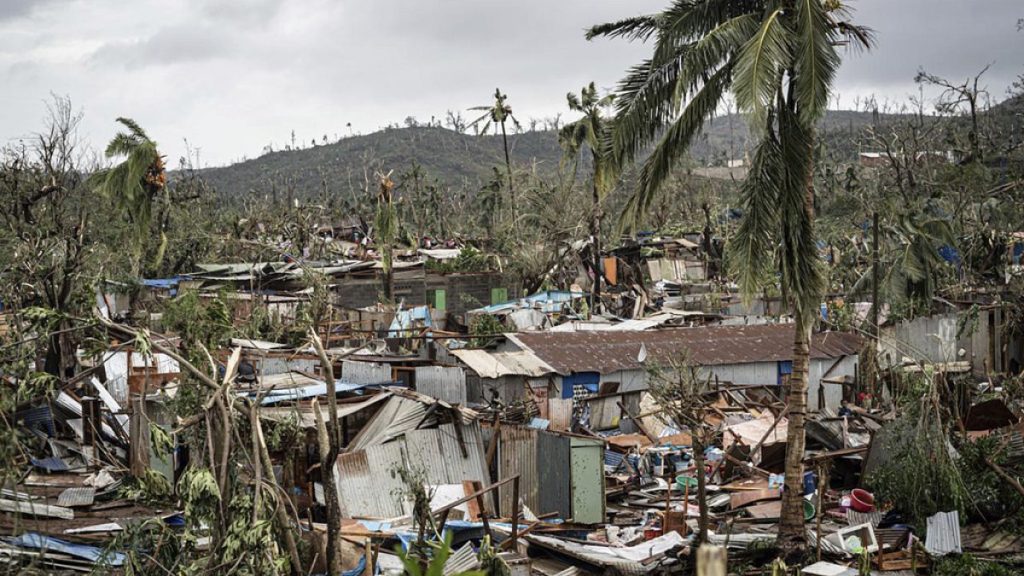Cyclone Chido, a deceptively small but ferocious storm, ravaged the island of Mayotte, leaving a trail of devastation that has crippled the island’s infrastructure and plunged its inhabitants into a humanitarian crisis. The storm’s intensity tore through homes, roads, water plants, and crucially, the airport control tower, severing vital communication lifelines and hindering rescue operations. The magnitude of structural damage is immense, and the full extent of human casualties remains unknown due to the communication blackout. Thousands are reported injured or missing, and the official death toll is likely a significant underestimate given the challenges in accessing and communicating with affected areas. The island’s inhabitants are struggling without access to basic necessities like water, food, electricity, and internet connectivity.
The destruction wrought by Cyclone Chido has rendered emergency response efforts incredibly complex. The collapse of the telecommunications network has isolated communities and made coordination between rescue teams and authorities nearly impossible. Baptiste Rivoire, National Operations Coordinator for Protection Civile, describes the situation as “extremely degraded,” highlighting the severe lack of resources and the immense challenges in reaching those in need. With 12 out of 15 telecommunications relay stations destroyed, most of the island remains cut off from the outside world, severely hampering communication and coordination of rescue efforts. This isolation extends even to the mayors of communities outside the capital, Mamoudzou, who are completely unable to communicate with authorities.
The logistical hurdles posed by the destroyed infrastructure are immense. Rescue volunteers face an arduous task, requiring complete self-sufficiency due to the lack of local resources. Every step, from transporting personnel and delivering aid to ensuring the safety of responders, demands meticulous planning and significant time. The precarious state of the island’s infrastructure makes even basic movement difficult and dangerous, posing a risk to both volunteers and emergency personnel like police, firefighters, and security forces. The sheer scale of the destruction is psychologically impacting rescue workers, who are struggling with the devastation and the anxiety of being unable to communicate with their own families. This unprecedented crisis has created an exceptionally challenging environment for emergency response efforts.
Compounding the difficulties is Mayotte’s geographical isolation. Located even further afield than the already remote island of Réunion, Mayotte presents significant logistical challenges for delivering aid and support. The disruption of transport and communication further complicates efforts to bring crucial resources to the island. Water, food, and medical care are the most pressing needs, with medical evacuations to Réunion underway but hampered by logistical constraints. A military field hospital has been established on the island, and medical personnel, including doctors, nurses, psychologists, and midwives, are being deployed to address the health crisis. The limited transport capacity, currently restricted to state-managed flights for essential missions, poses another significant hurdle. Concerns also exist about potential migration flows once commercial flights resume.
The human cost of the disaster remains a significant concern, with the official figures likely failing to capture the true extent of the tragedy. While the official count stands at 22 deaths, 45 missing, and 1,373 injured, the breakdown in communication and access to affected areas makes it highly probable that many injuries and fatalities remain unreported. The evacuation of serious cases to Réunion and the treatment of less critical injuries at the military field hospital are ongoing, but the full picture remains obscured. The challenge of assessing the death toll is compounded by cultural practices, specifically the Muslim tradition of burial within 24 hours, which may lead to unrecorded fatalities.
The overall picture painted by the aftermath of Cyclone Chido is one of widespread devastation and immense humanitarian need. The destruction of critical infrastructure, coupled with Mayotte’s geographical isolation, has created a perfect storm of challenges for rescue and recovery efforts. While aid organizations and authorities are working tirelessly to address the crisis, the scale of the damage and the logistical hurdles mean that the road to recovery will be long and arduous. The focus remains on providing immediate relief to those affected, restoring essential services, and ultimately, rebuilding the lives and livelihoods shattered by this catastrophic event.

